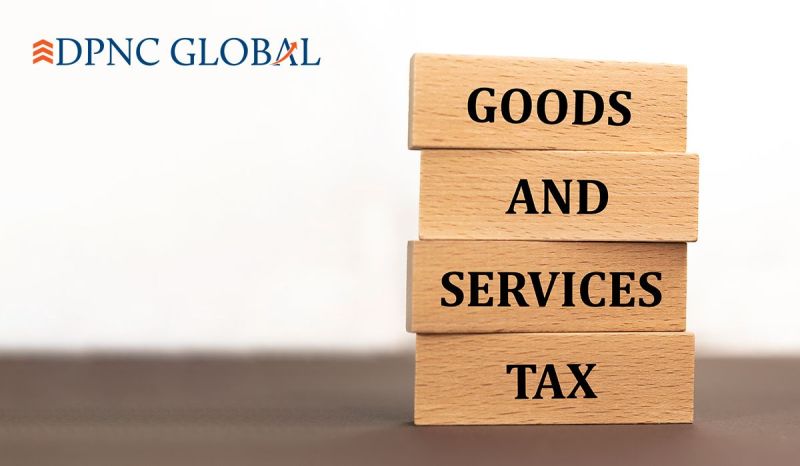As we are approaching the closure of the financial year 2024-25, taxpayers must give utmost priority to their Goods and Services Tax (GST) compliance to facilitate a smooth transition into the new fiscal year. This period presents a critical opportunity to complete essential compliance tasks. By fulfilling these obligations, taxpayers can minimize the risks associated with non-compliance while enhancing their overall operational efficiency GST registration process.
To effectively prepare for the financial year 2025-26, taxpayers should carry out a thorough reconciliation of their sales turnover, input tax credits, and other financial records. This process includes confirming the accuracy of all transactions and quickly resolving any discrepancies that may surface. By implementing these proactive steps, businesses can enhance their financial standing and ensure smooth compliance with GST regulations in the upcoming fiscal year.
1. Mandatory Registration
A person needs to make sure that if at the end of the FY 2024-25, his/her turnover crosses the threshold limit or is involved in such activities where compulsory registration is required, he/she has to apply GST Registration.
2. Important Reconciliations
It is essential to reconcile the turnover (including both taxable as well as exempt turnover) as well as Input Tax Credit as reported in GST returns along with the books of accounts. Therefore, following reconciliations are required to ensure proper compliance with:
a) Turnover Reconciliation
Turnover reported during the year in monthly returns i.e. in GSTR-1 and GSTR-3B needs to be reconciled with the books of accounts. It shall include debit notes, credit notes and amendments (if any) during the year. Such reconciliations must be rate-wise & HSN wise for the following:
- Taxable turnover
- Exempted turnover
- Nil rated Turnover
- Non-GST Supply
- Taxable under RCM
b) ITC Reconciliation
ITC availed during the FY in form GSTR-3B needs to be reconciled with ITC in books of accounts. Reconciliation of Input Tax Credit (ITC) claimed and reversed for RCM must be prepared separately from the reconciliation of ITC claimed under forward charge.
c) Electronic Credit Reversal and Re-claim statement
A review of the Electronic Credit Reversal & Re-claimed Statement (ECRS) is also required to re-avail the credit parked in ECRS upon fulfilling the condition.
3. Opting for composition scheme
As per rule 3(3) of the CGST Rules, 2017, every registered person who wishes to opt for the composition scheme shall furnish Form GST CMP02 before the end of the financial year i.e., before 31st March 2025.
4. ISD Compliance
- It is requested to inform your supplier rendering common services for raising invoice over your ISD regt. going forward as compliance is getting mandatory w.e.f. 01.04.2025.
- ISD needs to file their GSTR-6 by 13th of subsequent month
- ITC shall be distributed through ISD on turnover basis
5. Key Year End Compliance
- For the upcoming FY 2025-26, it is advised to apply for LUT for smooth compliance of zero- rated exports.
- Implementation of new 16-digit invoice series from April 1 2025
- File RoDTEP return for FY 2023-24 by March 31, 2025.
- Update IEC on the DGFT portal (April-June).
6. Input Tax Credit (ITC)
- Follow up with the vendors whose ITC is pending to be claimed for the FY 2024-25.
- ITC reversal on goods given on free samples as per Rule 42/43
- Apply for refund before two-year time limit lapses.
- ITC needs to be reversed as per rule 37, if the recipient fails to make payment to the supplier within 180 days. The recipient needs to reverse the amount along with interest.
- ITC reversal as per Rule 37a, if the supplier fails to file GSTR-3B for which the corresponding ITC claimed. So, the taxpayers need to prepare the list of suppliers who have not filed their GSTR-3B and ask them to furnish the return to avoid reversal of ITC.
7. TDS and TCS Credit Received
As per Section 51 of the CGST Act, TDS @ 2% (1% – CGST & 1% – SGST) is required to be deducted by the deductor and as per Section 52 of the CGST Act, TCS @ 0.5% is required to be collected by the E-commerce operator. All the TDS deducted and TCS collected amounts are reflected in the electronic cash ledger after successfully accepting the same in the TDS and TCS credit received option. Such balances must be reconciled with the balance lying in books of accounts.
8. Mandatory preparation of E-Invoice
- Registered person shall prepare an e-invoice for the supply of goods or services or both to the registered person or exports, whose aggregate turnover is more than Rs. 5 Cr in any preceding financial year from FY 2017- 18 onwards. To check the applicability for FY 2025-26, AATO needs to be checked from FY 2017-18 to FY 2024-25.
- Further, from 01.04.2025 onwards, a registered person having an annual aggregate turnover of more than 10 cr. is required to generate an e-invoice within 30 days as per the advisory issued by the GSTN dated 5th November 2024
9. QRMP Scheme
Quarterly Returns with Monthly Payment (QRMP) scheme for Q1 of FY 2025-26 may be opted for from 01st Feb 2025 to 30th April 2025, if Annual Aggregate Turnover does not exceed Rs 5cr.
10. Reverse Charge Mechanism
As per section 31(3)(f) of the CGST Act read with rule 47A of the CGST Rules, if the supplier is unregistered then an invoice shall be issued by the registered person (recipient) within a period of 30 days from the date of receipt of goods or services or both. Therefore, the registered person needs to make sure that RCM invoice must be prepared and taxes must have been discharged and corresponding ITC must have been availed.
11. E-way bill
w.e.f 01.04.2025 all registered persons are required to comply with Two Factor Authentication to enhance the security of e-Way Bill/e-Invoice System. NIC is introducing two Factor Authentication for logging in to e-Way Bill/e-Invoice system. In addition to username and password, OTP will also be authenticated for login. There are 3 different ways of receiving OTP
- SMS: OTP will be sent to your registered mobile number
- Using ‘NIC-GST-Shield’ app
- On ‘Sandes’ app: You may download the Sandes app on your registered mobile number and receive the OTP in it.
DISCLAIMER:
The information contained herein is in summary form and is prepared based on the provisions of GST and allied laws and related Rules, Circulars, Notifications therein. For details, please refer the relevant provisions. While the information is believed to be accurate to the best of our knowledge, we do not make any representations or warranties, express or implied, as to the accuracy or completeness of this information. Reader should conduct and rely upon their own examination and analysis and are advised to seek their own professional advice. We accept no responsibility for any errors it may contain, whether caused by negligence or otherwise or for any loss, howsoever caused or sustained, by the person who relies upon it.
To download PDF version of this article , please click on the download button below.
About Our GST & Indirect Tax Services
Our GST & Indirect Tax Services team focuses on resolving practical issues faced by taxpayers and businesses while ensuring due compliance with complex legislation. Our services extend from timely and systematic support for GST compliances to advisory on a wide range of contemporary indirect tax issues and GST litigation support.
Our team of GST Consultants possesses in depth experience across diverse sectors and offer tailored solutions for tax optimization while ensuring due compliance with this complex and dynamic legal transaction regime law. To know more about our services, visit https://dpncglobal.com/


